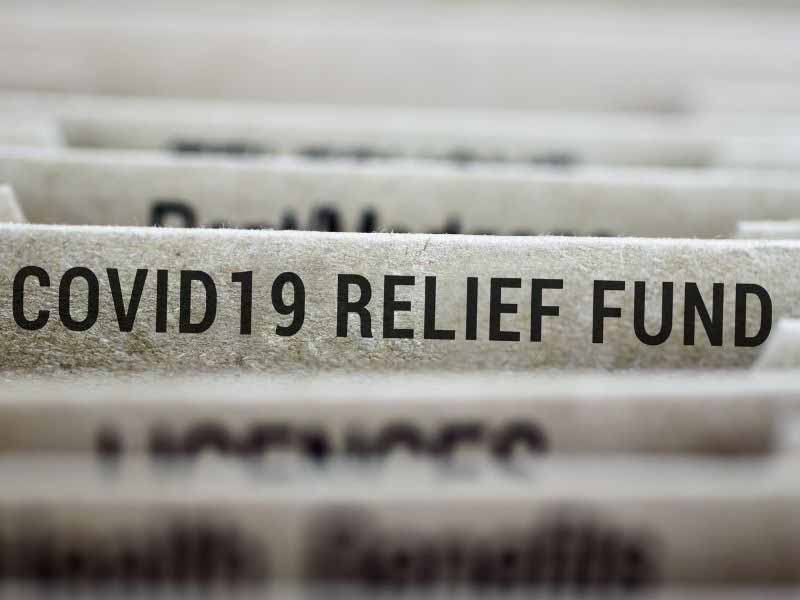President Trump has signed the $900 billion Consolidated Appropriations Act – or COVID-19 relief bill – which provides stimulus payments to eligible individuals, extended weekly unemployment benefits and more than $300 billion in aid for small business.
This legislation also provides for tax deductability of business expenses paid with forgiven Paycheck Protection Program loans, makes available a new round of PPP funding, and offers businesses facing severe revenue reductions the opportunity to apply for a second loan.
In addition, PPP borrowers with loans of $150,000 or less can utilize a simplified forgiveness application.
Some key provisions within the bill include:
1. Aid for small businesses struggling as a result of the pandemic.
• Provides additional funding to the SBA for first and second PPP forgivable small-business loans.
• Makes additional Economic Injury Disaster Loan Grants available to businesses in low-income communities.
• Creates $15 billion in dedicated funding for live performance venues, independent movie theaters and cultural institutions.
• Sets aside $12 billion to help businesses in low-income and minority communities.
2. Economic impact payments of $600 for individuals earning up to $75,000 per year and $1,200 for married couples making up to $150,000 per year, as well as a $600 payment for each child dependent.
3. Assistance for unemployed individuals.
• Provides workers receiving unemployment benefits a $300 per week supplement from December 26, 2020, until March 14, 2021.
• Extends the Pandemic Unemployment Assistance Program, expanding coverage to the self-employed, gig workers and others in nontraditional employment, and the Pandemic Emergency Unemployment Compensation program, which provides federal funding for workers whose state benefits have run out.
4. Emergency rental aid and an extension of the national eviction moratorium through January 31, 2021.
5. Funding for colleges and schools, including support for HVAC repair and replacement to mitigate virus transmission, and for child-care assistance.
6. Emergency food assistance.
7. Allows a 100 percent business expense deduction for meals (rather than the current 50 percent) as long as the expense is for food or beverages provided by a restaurant. This provision is effective for expenses incurred after December 31, 2020, and expires at the end of 2022.
With regard to the new round of PPP, the program contains many similarities to the first round, but with several important differences. Previous PPP recipients may apply for another loan of up to $2 million, provided they meet the following criteria:
• 300 or fewer employees.
• Have already used or will use the full amount of their first PPP loan.
• Can show a 25 percent gross revenue decline in any 2020 quarter, compared with the same quarter in 2019.
PPP2 also will permit first-time borrowers from the following groups:
• Businesses with 500 or fewer employees that are eligible for other SBA loans.
• Sole proprietors, independent contractors and eligible self-employed individuals.
• Nonprofits, including churches.
• Accommodation and foodservice operations with fewer than 300 employees per physical location.
As with PPP1, the costs eligible for loan forgiveness in PPP2 include payroll, rent, covered mortgage interest and utilities. PPP2 also makes the following potentially forgivable:
• Covered worker protection and facility modification expenditures, including personal protective equipment, to comply with COVID-19 federal health and safety guidelines.
• Expenditures to suppliers that are essential at the time of purchase to the recipient’s current operations.
• Covered operating costs, such as software and cloud computing services and accounting needs.
To be eligible for full loan forgiveness, PPP borrowers must spend no less than 60 percent of the funds on payroll over a covered period of between eight and 24 weeks – the same parameters PPP1 had when it stopped accepting applications last August.
PPP borrowers may receive a loan amount of up to 2.5 times their average monthly payroll costs in the year prior to the loan or the calendar year, the same as with PPP1 – but the maximum loan amount has been cut from $10 million in the first round to the previously mentioned $2 million maximum.
The relief package also specifies that business expenses paid with forgiven PPP loans are tax-deductible. This supersedes IRS guidance that such expenses could not be deducted.
Lastly, the new legislation has created a simplified forgiveness application for loans up to $150,000:
• The borrower submits a one-page certification including information regarding the number of employees retained as a result of the PPP loan, an estimate of the payroll costs incurred in the covered period and the total loan amount.
• The borrower must maintain supporting documentation related to such employment for four years and other costs for three years.
• The legislation repeals the requirement that borrowers must deduct EIDL advances from forgiveness amounts.
Source: Mann, Weitz & Associates












